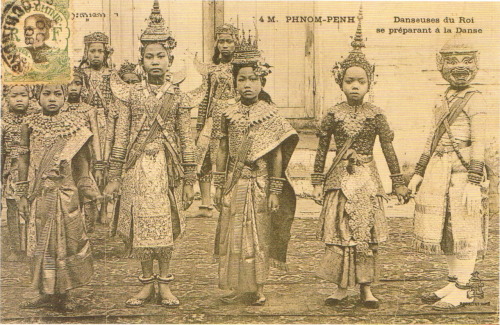
After the Cambodian holocaust in the 1970s, when many traditional dancers and musicians were killed, the survival of an art form was in jeopardy. As the leading Cambodian arts education and performance organization in the United States, Cambodian-American Heritage (CAH) has undertaken the responsibility of preserving this Asian artistic tradition, training the next generation of Cambodian-Americans in Cambodian classical and folk dances and traditional music, and also introducing this traditional art form to a mainstream American audience.
Apsara Dance: Traditional Khmer Performances

Many people would argue that a trip to Siem Reap and Cambodia is not complete without attending a traditional Cambodian dance performance. This ancient art form and beautiful dances have played a major part in Khmer culture for more than thousand years and have seen a great revival over the last few years.
Most dance performances in Siem Reap offer a mixture of Classical and Theatrical Folk dances. A few venues offer Shadow Theater. Many of the dance performances in Siem Reap consist of 4-6 individual dances, often opening with an Apsara Dance, followed by two other Classical dances and two or three Theatrical Folk dances.
.jpg)
The Apsara Dance is a Classical dance inspired by the apsara carvings and sculptures of Angkor and developed in the late 1940s by Queen Sisowath Kossamak. Her grand daughter and protégé, Princess Bopha Devi, was the first star of the Apsara Dance. The central character of the dance, the apsara Mera, leads her coterie of apsaras through a flower garden where they partake of the beauty of the garden. The movements of the dance are distinctly Classical yet, as the dance was developed for theatrical presentation, it is shorter and a bit more relaxed and flowing than most Classical dances, making it both an excellent example of the movements, manner and spirit of Classical dance and at the same time particularly accessible to a modern audience unaccustomed to the style and stories of Khmer dance-drama.
History of Traditional Apsara Dance Show
In 1940s, Queen Sisowath Kossomak Nearirath Serey Vatthana, the wife of King Norodom Suramarit, was sent an invitation to Sothearath primary school, seeing the school mistress prepared an inspirational angkor apsara dance which is performed by young school in the paper apsara costume includes Crown, Sampot and Flower, all referencing Apsara represented at Angkor Wat. The Queen got the idea to re-create the dance and led her first granddaughter, Princess Norodom Buppha Devi, a daughter of Norodom Sihanouk, to become the first professional apsara dancer of the modern era. The Princess started practicing the dance since she was 5 years old and danced apsara for first time during King Norodom Sihanouk's tenure.
In 1967, the fine–boned young princess, clad in silk and glittering jewels, performed beneath the stars on the open pavilion within the palace walls, accompanied by the royal dance troupe and the "pinpeat" orchestra. Selected by her grandmother, Queen Sisowath Kossomak, to become a dancer when she was only a baby. She toured the world as the principal dancer of the apsara role.
During the Angkorian era, dance performances were enjoyed by kings and common people alike. The dances are perhaps better described as 'dance-dramas' as they also convey a story or message which also can be found portrayed several places in the Angkor temples. It has played an important role of the Khmer cultural heritage, but like many other Cambodian cultural traditions, Apsara dancing and other traditional Khmer dances were almost destroyed during the Khmer Rouge regime. Due to the increased interest for Cambodian culture and, in large part the extraordinary efforts of Her Excellency Princess Bopha Devi, the ancient art form has seen a great revival, and today you will find many places with regular shows and performances in Siem Reap and Cambodia.

Royal Khmer Dance Troupe preparing for a performance, 1900-1930 Phnom Penh’ :
Traditional Textiles of Cambodia, Cultural Threads and Material Heritage

No comments:
Post a Comment